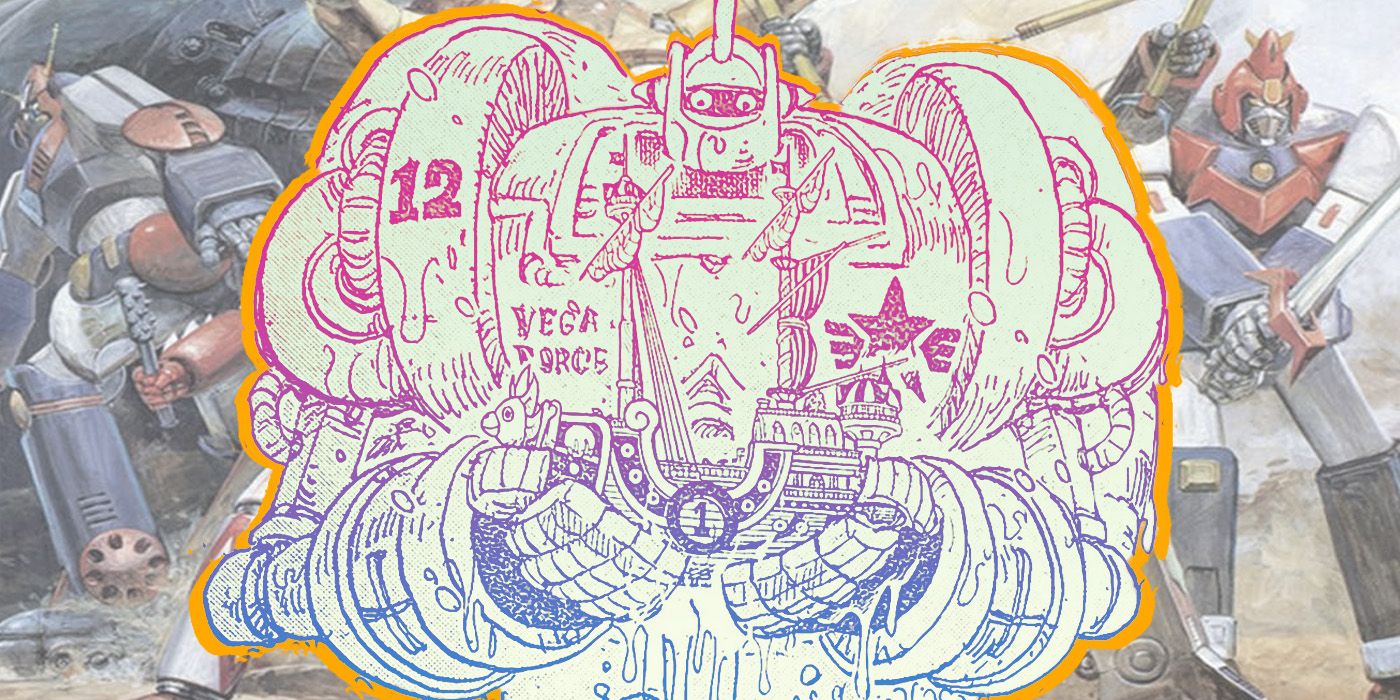The following contains spoilers for One Piece Chapter 1062, “Adventure in the Land of Science,” by Eiichiro Oda, Stephen Paul and Vanessa Satone, available in English from Viz Media.
The giant robots of Dr. Vegapunk are mechanical marvels, especially by One Piece standards, but there’s something more to them. They’re Eiichiro Oda’s love letter to old-school mecha anime, which can be seen in their designs and aesthetics. Modern anime fans may associate these machines with Mobile Suit Gundam, but they actually hearken back to some much older mecha.
There are two kinds of mecha anime in Japan, real robots and super robots. Gundam falls into the former category with its militaristic themes and adherence to grounded logic. Super robot anime, on the other hand, feature superpowered robots and much more fantastical scenarios. For the sake of the mecha in One Piece, Oda seems to have drawn inspiration from the classic super robot anime from between the early 60s and mid-70s.
What Mecha Do Vegapunk’s Robots Look Like?
So far, the giant robot aesthetic is best observed in the mecha Vegapunk Lilith was piloting; spindly upper arms between large shoulders and cylindrical forearms; a head that resembles a knight’s helmet; spikes protruding from either side of the head. These types of design choices are observable in anime like Mazinger, Gaiking, or Getter Robo. They might look silly in a real robot series like Gundam, but they fit right into the cartoony world of One Piece.
Lilith’s machine seems to borrow especially from Tetsujin 28-gō, better known as Gigantor the space-age robot in the US. Both mecha have human-like eyes, a mohawk-like crest, a visor for a mouth, and a jetpack. It’s much bigger than Gigantor, but the other similarities are undeniable.
Another one of Vegapunk’s designs for a giant robot appears in Chapter 1062, “Adventure in the Land of Science.” The holes in this robot’s visor and the spikes coming out of the sides of its head make it much closer to Mazinger in design; the studded forearms also seem like something out of Mazinger. The V-shaped crest could be said to come from Gundam, though it also might take inspiration from Combattler V. Only the top half of this robot has been shown; more of the super robot aesthetic might be observable on its lower body.
This aesthetic can be seen in a few other places in the One Piece meta, especially with Franky. It becomes especially apparent whenever Franky pilots his own giant robot, the General Franky; this machine was partially designed with Vegapunk’s technology, so it makes sense that there are similarities between the two inventors’ styles. There was also a time when Oda drew a theoretical version of what Franky would look like at age 50 if things went wrong. The cyborg became more robot-like and also took on a lot of features reminiscent of Gigantor, including the crest and the underbite. This makes it apparent that Oda didn’t just research mecha anime for the Egghead Arc and has a genuine interest in them.
How Else Could Vegapunk Be Inspired by Mecha Anime?
The similarities between Vegapunk’s robots and classic anime mecha probably don’t end at appearances alone. They could have all the capabilities associated with such mecha: giant swords, laser cannons, rocket fists, drill knees, detachable boomerang crests, and super modes. They might even have docking capabilities that let them combine into a bigger and far more powerful mecha.
Keeping in line with the Egghead Arc’s sci-fi theme, Vegapunk’s inventions might have abilities that baffle even Devil Fruit users. They could have Gunbuster’s ability to slip through time, or Shin Getter Robo’s ability to pull in energy to evolve. If Vegapunk’s machines have anything close to this potential, then the Straw Hat Pirates will definitely be in for a challenge.
However deep the homage goes, Oda’s love for mecha anime has been made readily apparent on Egghead. There are plenty of references in the mechanical designs alone. That said, the opportunity to delve further into the references gives this arc the potential to become something beyond the audience’s imagination.
